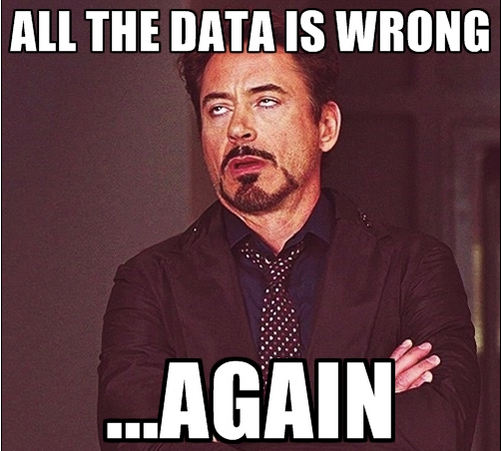

A behind-the-scenes look at building AI infrastructure with Promoboxx
We've been having a lot of conversations lately that start the same way: "We want to experiment with AI, but our data infrastructure is slowing us down. We're wasting all our time on $#&%!* pipelines instead of building intelligence." It's become so common that we've started calling it the AI readiness gap.
Most companies think their AI challenges are about finding the right models or hiring ML engineers. But working with customers like Promoboxx has shown us the real problem: it's not about having the right data, it's about having access to the right data, in the right format, when and where you need it. Whether that's forking the same dataset to multiple destinations for rapid testing or ensuring real-time availability across different systems.
Promoboxx came to us with an ambitious vision. As a retail marketing platform connecting national brands with thousands of local retailers, they wanted to build AI-powered content analysis that could:
The technical vision was solid. The business case was clear. But here's what would have made the project painstaking, both in terms of time and resources expended: data access patterns for AI are fundamentally different from traditional transactional and analytical workloads.
Romi McCullough, Promoboxx's CTO, put it perfectly: "Data is key for practical applications of generative AI, but the shape and access patterns for context engineering differ from traditional transactional and analytical workloads."
This is the insight most companies miss when planning AI initiatives.
Traditional data architecture assumes you know what questions you want to ask. You build schemas, design tables, optimize for known queries. But AI workflows are exploratory by nature:
Multiple models, same data: You want to run that image through content analysis, brand safety detection, and accessibility checks. Traditional pipelines would require three separate extractions.
Iterative improvement: You develop a better embedding model and want to reprocess historical data instantly. Traditional approaches mean waiting months for new data to accumulate or digging through a data swamp to try to find the data from the last year (if it’s even there?!).
Cross-functional synthesis: Your recommendation engine needs insights from content analysis, performance data, and user behavior patterns. In most architectures, these live in completely separate systems.
Real-time + historical: You need both streaming analysis of new content and the ability to instantly query years of processed results.
We're currently implementing this with Promoboxx, and watching their architecture come together has been fascinating. Instead of building dedicated pipelines for each AI use case, we're creating what they call a "RAG-and-filter system”.
This isn't just about moving data, it's about making the same data available for multiple AI applications without wasted engineering time.
Matterbeam collects data from their MySQL database, transforms it as needed, then sends it to AI image analysis tools like Amazon Rekognition for processing. When the analysis results come back, Matterbeam simultaneously distributes them to multiple destinations, ensuring each system gets exactly the data it needs without separate extraction processes. For this deployment, the destinations are Postgres for transactional workflows, Pinecone for vector search, and Redshift for analytics.
When Promoboxx analyzes an image for content recommendations, those insights automatically become available for semantic search, performance analytics, and any future AI models they develop. Process once, use everywhere.
The real business impact isn't technical, it's temporal. Promoboxx's team could build all of this with traditional pipelines. But the time savings are transformative.
Instead of spending weeks building new data infrastructure every time they want to experiment with a different AI approach, they can iterate in real time. While competitors plan quarterly AI feature releases, they're iterating weekly.
This speed advantage compounds. Every week they're not building data plumbing is a week they're building intelligence.
Working through this implementation has reinforced something we've suspected: most AI projects fail at the data access layer, not the model layer.
Companies get excited about the latest LLM or computer vision breakthrough, then spend months trying to get their data into the right format. By the time they've built the infrastructure, the competitive window has closed.
The companies succeeding with AI aren't necessarily the ones with the best data scientists. They're the ones who can get data to their models fastest or got lucky and had the data in the right format ahead of time.
Promoboxx isn't unique in having this challenge. We're seeing the same pattern across industries: ambitious AI visions constrained by inflexible data infrastructure.
The solution isn't better pipelines. It's rethinking how data flows through organizations entirely. Instead of point-to-point connections, you need hub-and-spoke architectures that can support the exploratory, iterative nature of AI development. Instead of building for known use cases, you need to build for unknown future experiments.
We're still in the early stages with Promoboxx, but the architecture is already enabling experiments that would have been impossible before. They're testing new content analysis models, exploring advanced video processing, and building recommendation engines that synthesize insights across their entire platform.
Most importantly, they're doing it all without the traditional data engineering overhead that kills most AI initiatives.
For other companies considering AI projects, this might be the most important question: How quickly can you get new data to your models? If the answer is "months," you're probably building the wrong infrastructure.
The future belongs to companies that can experiment at the speed of their ideas, not the speed of their data pipelines.
Interested in learning more about building AI-ready data architecture?
We're always happy to share what we're learning. Let's talk.